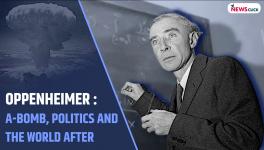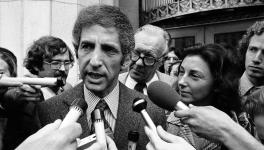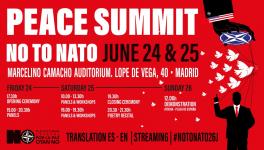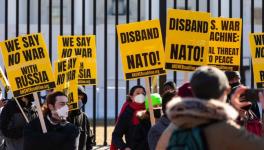80 Years of Hiroshima, Nagasaki: US Still Grapples With N-War Legacy
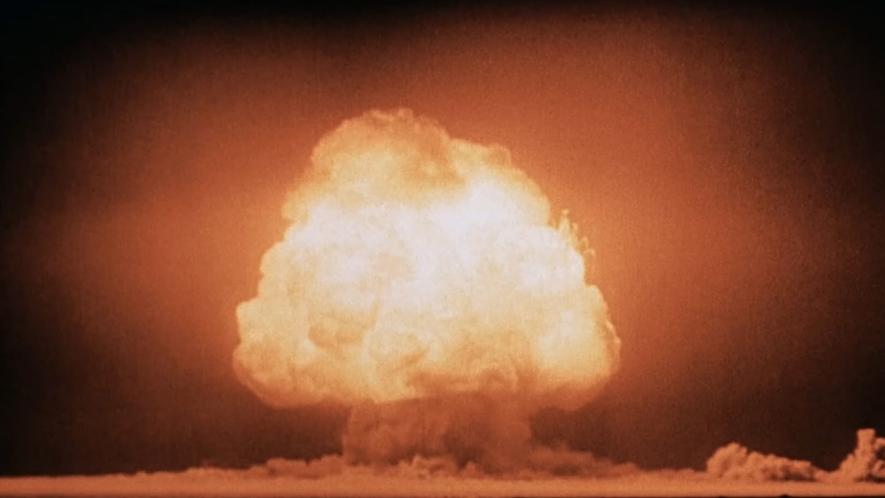
Mushroom cloud over the Trinity testing site, seconds after detonation
This year marks the 80th anniversary of the only time nuclear weapons were used in war: the US bombings of Hiroshima and Nagasaki. In its efforts to force Japan’s surrender during the tail end of World War II, the United States’ bombings of the Japanese cities resulted in devastating consequences for the people of Hiroshima and Nagasaki with the deaths of at least 210,000 people and long term health and genetic effects on the population of Japan. The bombings occurred on August 6 in Hiroshima and August 9 in Nagasaki in 1945.
Today, the US is still the only nation that has used nuclear weapons in wartime.
Historian Ben Becker wrote in Liberation News that the bombings of Hiroshima and Nagasaki “are best understood not as the end of World War II, but as the beginning of a new war and an altogether new historical era.” Becker argues that since those bombings, the US has used its possession of one of the world’s largest nuclear arsenals to threaten other nations. “The nuclear weapon has been, from the very first time it was dropped, the military and political weapon of US imperialism,” wrote Becker.
Manhattan project and first detonation
The bombs that would eventually devastate Hiroshima, Nagasaki, and much of the overall Japanese population were developed through US government-led research program called the Manhattan Project, active from 1942 to 1946.
Much of the reason for the project’s inception was motivated by fears of Nazi Germany developing an atomic bomb. In 1939, physicist Leó Szilárd, in consultation with fellow Hungarian scientists Edward Teller and Eugene Wigner, drafted a letter which was signed onto by Albert Einstein and addressed to President Franklin D. Roosevelt. The Einstein–Szilard letter warned that Nazi Germany might develop atomic weapons, and suggested that the US begin its own nuclear research program.
On July 16, 1945, the world’s first nuclear bomb was detonated in New Mexico, in the American Southwest as part of the Manhattan Project. The test caused serious health issues to generations of New Mexico residents. According to research by the Tularosa Basin Downwinders Consortium (TBDC), the blast at what is now known as the “Trinity Site” led to unusual forms of cancer among many of the 30,000 people who lived in the area. These residents continue to seek justice today,
Immediate aftermath and early dissent
The US bombings in Japan and the subsequent devastation and deaths of hundreds of thousands launched a movement of global outrage, including among those who had been the strongest advocates of developing something akin to the Manhattan Project.
Leó Szilárd, who ended up working on the Manhattan Project, drafted a petition in the summer of 1945, attempting to avert the use of the bomb against Japan by US President Truman. “We, the undersigned scientists, have been working in the field of atomic power,” read the petition. “Until recently we have had to fear that the United States might be attacked by atomic bombs during this war and that her only defense might lie in a counterattack by the same means. Today, with the defeat of Germany, this danger is averted,” the petition asserted, warning that the US “may have to bear the responsibility of opening the door to an era of devastation on an unimaginable scale.”
Shortly before his death, Albert Einstein, who had originally been involved in the development of the US nuclear bomb, signed onto the Russell-Einstein Manifesto of 1955, which warned of “the risk of universal death.”
“Here, then, is the problem which we present to you, stark and dreadful and inescapable: Shall we put an end to the human race; or shall mankind renounce war?” asked the manifesto, also signed by British philosopher Bertrand Russell.
Nuclear armament
Following Hiroshima, the US rapidly expanded its nuclear arsenal and held a monopoly on nuclear weapons until the Soviet Union detonated an atomic bomb in September 1949. The United States responded by creating the hydrogen bomb, a nuclear weapon one thousand times more powerful than the bombs dropped on Hiroshima and Nagasaki.
In 1967, the US nuclear stockpile reached its peak of 31,255 warheads and bombs. Today, nine countries possess nuclear weapons: Russia, the United States, China, France, the United Kingdom, Pakistan, India, Israel, and North Korea. These states have a combined stockpile of roughly 12,331 nuclear warheads, with over 9,600 in active military stockpiles, according to the Federation of Atomic Scientists’ 2025 Status of World Nuclear Forces report.
Courtesy: Peoples Dispatch
Get the latest reports & analysis with people's perspective on Protests, movements & deep analytical videos, discussions of the current affairs in your Telegram app. Subscribe to NewsClick's Telegram channel & get Real-Time updates on stories, as they get published on our website.











